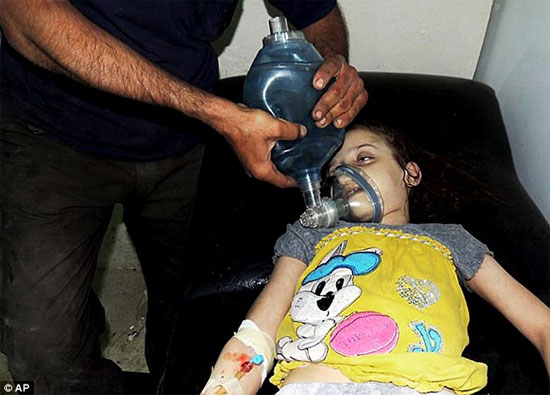Sarin - Killer killed in minutes
Sarin is a colorless, odorless, tasteless chemical that can kill people or leave bad health sequelaes in very small amounts.
The name sarin comes from the initials of the chemist's name who happened to discover it: Schrader, Ambros, Ruediger et Van der Linde. The scientists tried to create a stronger insecticide, but the recipe was later acquired by the Nazi army to produce chemical weapons, and was developed by Nazi scientists. in 1938.
When a person inhales or absorbs sarin through the skin, this toxin will paralyze the central nervous system's respiratory center and stop the muscles around the lungs.
According to the World Health Organization (WHO), sarin is 26 times more likely to kill people than cyanide. Only a single drop of sarin needles can kill a person.
Symptoms when a person is exposed to sarin are headache, nausea, blurred vision, drooling, convulsions, respiratory arrest and unconsciousness. Breathing a high dose of about 200 milligrams of sarin can be fatal 'in minutes' , even without time to develop symptoms, according to the Chemical Restraint Organization.

Syrian authorities are accused of using sarin to kill thousands of civilians on August 21.(Photo: AP)
However, sarin takes longer to absorb through the skin and within the first half an hour will not cause any symptoms. The disease process then proceeds quickly. Even when not lethal, sarin also causes long-term effects such as destroying the victim's lungs, eyes and central nervous system.
Heavier than air, this poison can exist in an area for up to 6 hours, depending on weather conditions. In general, these neurotoxins act quickly and are easy to manufacture with simple, inexpensive chemical technology and available materials. According to the US Centers for Disease Control and Prevention (CDC), sarin can get into food or water. The center also stressed that sarin antidote was available.
The most infamous sarin attack occurred in March 1988, with 5,000 Kurds killed and 65,000 injured, as Iraqi troops used a variety of chemicals including sarin, mustard gas and possibly VX, a neurotoxin 10 times stronger than sarin, to attack. This is also considered the worst poison gas attack on civilians.
Sarin also killed 13 people and injured 6,000 when Aum Shinrikyo sect attacked the Tokyo subway in March 1995. The denomination also used sarin poison in the attack a year earlier in Matsumoto City, killing seven people.
US Secretary of State John Kerry said hair and blood samples collected from the attack in eastern Damascus on Aug. 21 showed signs of sarin. Washington fully believes that the Syrian government is the one who carried out the toxic chemical attack that killed more than 1,400 people, including hundreds of children.
The UN inspectors investigating the Syrian government's alleged use of chemical weapons left the country on August 31. Analysis of samples can take up to three weeks.
The Syrian government is said to be controlling hundreds of tons of different chemical toxins. In addition to poisonous blisters like mustard gas, Damascus is also thought to possess sarin and possibly VX.
The Syrian government also has the means to attack with chemicals such as Scud missiles, artillery and aerial bombs, according to defense analysts.
- Strangely, killer whales make a living for handicapped children
- Video: Watching the whale 'killer' chasing a strange ship
- Killer whales can die from ... toothache
- Discovered rare white killer whales
- 15 minutes in hell at the heart of a tornado
- The mystery of the class of killer murders killing 12,000 people in London was resolved
- The killer whale finally gave up the corpse after 17 days floating in the ocean
- Mischievous whales use bird trap tips
- Killer whales sneak in fishermen to cut all fish
- Fear of two 6 ton killer whales rushing towards the swimming boy
- Whales cry because of aground, the action of the people makes everyone admire
- Giant killer whales and shocking whips are aimed at sea lions
 Green tea cleans teeth better than mouthwash?
Green tea cleans teeth better than mouthwash? Death kiss: This is why you should not let anyone kiss your baby's lips
Death kiss: This is why you should not let anyone kiss your baby's lips What is salmonellosis?
What is salmonellosis? Caution should be exercised when using aloe vera through eating and drinking
Caution should be exercised when using aloe vera through eating and drinking